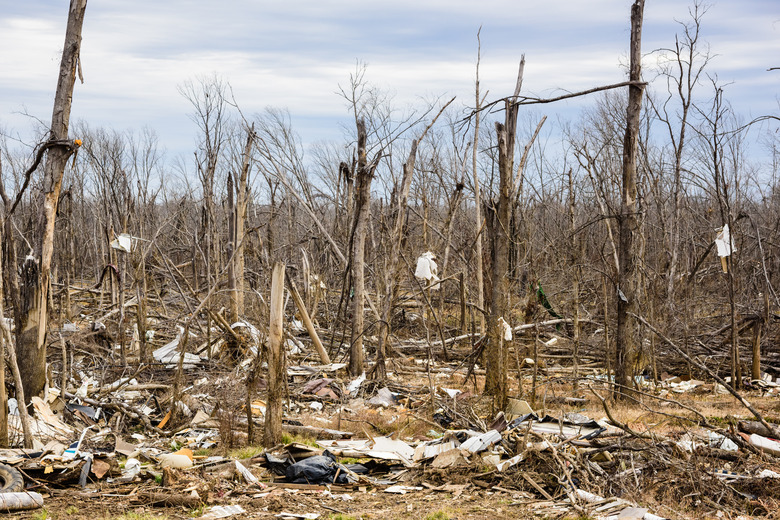Tools Used To Measure Tornadoes
According to the National Weather Service, a tornado is "a violently rotating column of air attached to a thunderstorm and in contact with the ground." These destructive phenomena are most common in "Tornado Alley" in the central United States. Because of their dangerous wind speeds and associated thunderstorms as well as their unpredictability, tornadoes are notoriously difficult to measure. Tools used to measure tornadoes include barometers, Doppler radar and "turtles." Tornadoes are classified by the amount of damage they produce.
Barometers
Barometers
Barometers measure air pressure. When a strong thunderstorm moves into an area, air pressure drops considerably. The most drastic drop in pressure occurs within the actual tornado. The largest drop in pressure ever recorded was in April 2007 in Tulia, Texas, when the air pressure within a tornado dropped 194 millibars.
Doppler Radar
Doppler Radar
Although tornadoes are too small to be picked up by Doppler radar, this useful meteorological tool indicates the presence of strong thunderstorms that are likely to produce tornadoes. Doppler radar provides an image of the shape of a thunderstorm cell, the intensity of precipitation within that cell and wind velocity. Thunderstorm cells shaped liked kidney beans tend to produce tornadoes more frequently than other types of cells. Doppler radar indicates the presence of mesocyclones, or rotating wind fields that are likely to produce tornadoes. When combined with reports of actual tornadoes, Doppler radar provides valuable measurements that meteorologists can use to make their future predictions more accurate.
Turtles
Turtles
Designed in part by storm chaser Tim Samaras, "turtles" are small devices filled with instruments that measure humidity, pressure, temperature and wind speed/direction. Storm chasers must spend time finding the right conditions for tornadoes to develop and then put themselves in the line of fire in order to deploy a turtle. The storm chaser must place the turtle in the path of an approaching tornado, while leaving enough time to escape. Samaras has successfully placed numerous turtles, and the information collected from the devices will be used to help forecasters make more precise predictions about tornadoes.
EF Scale
EF Scale
Because it is so difficult to measure tornadoes accurately, the ranking scale refers to the destructiveness of the tornado, not its actual strength. Meteorologists currently use the Enhanced Fujita scale, or EF scale, to classify tornadoes based on their damage to a variety of structures, ranging from trees to mobile homes to hospitals. The EF scale ranges from 0 to 5, with 5 being the most destructive.
Cite This Article
MLA
Black, Kat. "Tools Used To Measure Tornadoes" sciencing.com, https://www.sciencing.com/tools-used-measure-tornadoes-8297640/. 22 November 2019.
APA
Black, Kat. (2019, November 22). Tools Used To Measure Tornadoes. sciencing.com. Retrieved from https://www.sciencing.com/tools-used-measure-tornadoes-8297640/
Chicago
Black, Kat. Tools Used To Measure Tornadoes last modified March 24, 2022. https://www.sciencing.com/tools-used-measure-tornadoes-8297640/
